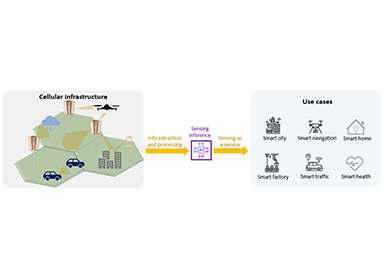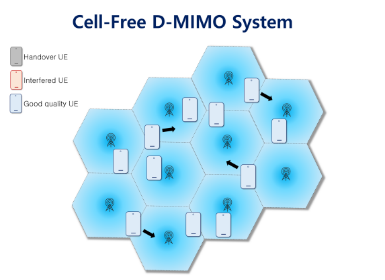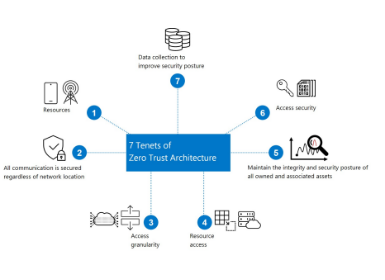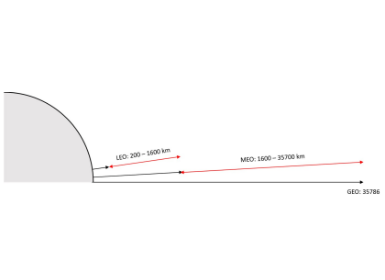Communications
Technology Innovation towards mmWave Fixed Wireless Access

Introduction
Fixed wireless access (FWA) is expected to drive 5G subscriber growth, with global subscriptions reaching 265 million by 2029, growing at a 14% compound annual growth ratio (CAGR) from 2023 to 2029 [1]. FWA users can consume 20 to 30 times more data compared to mobile users, who typically use around 15 GB per month. This places a significant strain on the network [2, 3]. Most existing FWA systems operate in Frequency Range 1 (FR1), using frequencies below 6 GHz. However, Frequency Range 2 (FR2), which includes frequencies ranging from 24.25 to 71 GHz, is suitable for meeting FWA demands along with FR1. This blog discusses key technology innovations enabling improved coverage and capacity for beyond 5G and 6G FR2-based FWA deployments.
Technology Innovations for Coverage and Capacity Improvement
FWA differs from mobile millimeter wave (mmWave) in several ways. First, FWA terminals, also known as customer-premises equipment (CPE), are plug-in powered and have improved hardware capability. They are equipped with larger antenna arrays and are placed in fixed positions, often mounted on the rooftop or an outside wall of a house. As a result, the wireless channel condition experienced by a CPE remains stable for a long period of time. It is less susceptible to interruptions caused by obstacles, especially blockage from the human body. Furthermore, there is less need for complex mechanisms to handle the cell mobility. These properties can be exploited to design FWA-centric design of FR2 base stations (BSs), or access units (AUs), to improve coverage and capacity.
In cellular networks, coverage is defined as the maximum distance from a BS where a user equipment (UE) can achieve specific downlink (DL) and uplink (UL) data rates. For example, the Federal Communications Commission (FCC) set a target DL/UL throughput of 25/3 Mbps for broadband internet in 2015, later increased to 100/20 Mbps in 2024 [4]. The latest target is sufficient for activities like watching YouTube videos in 4K, making ultra-high-definition video calls, or engaging in online learning. For FWA, the cell radius required to simultaneously support multiple CPEs with different data rates during peak hours is crucial, impacting both operating costs and revenues. Hence, in the context of FWA, coverage encompasses not only “single-user” coverage with guaranteed data rates when the cell resources are dedicated to one user but also “multi-user” coverage with additional data rate guarantees during busy hours to satisfy minimum performance requirements.
While conventional AUs offer high throughput in hotspots by utilizing the wide bandwidth available in the FR2 band, their DL coverage is limited due to their low maximum DL effective isotropic radiated power (EIRP), falling more than 10 dB below compared to the FCC limit. To extend the DL coverage required for FWA use cases, we need a new AU design that increases the DL EIRP. One possible solution is to enhance beamforming gains using wider apertures and improved power amplifiers (PAs). For FWA-centric applications, increasing the AU aperture is promising since they can be mounted on macro-cell towers or deployed on rooftops or walls. A 2-4 times increase in aperture size should be prioritized for commercial viability. However, merely widening the aperture is insufficient to reach the FCC’s EIRP limit; upgrading the PA to emit higher power efficiently is also necessary. The efficiency and power capacity of PA are intrinsically constrained by the semiconductor components used in its design. Although III-V devices such as Gallium Nitride (GaN) or Gallium Arsenide (GaAs) exhibit superior performance compared to Complementary Metal-Oxide-Semiconductor (CMOS) counterparts, their higher cost and lower yield make them impractical for FR2 applications requiring a large number of antennas and PAs. Nonetheless, recent advancements in GaN devices suggest that an affordable PA based on III-V devices may soon become feasible for FR2 use cases [5]. Furthermore, the heterogeneous integration of CMOS beamformers with PA based on III-V devices will likely emerge as a key enabling technology.
To achieve higher beamforming gain throughout the entire cell coverage area, the AU needs to offer a large number of beams. This becomes even more critical for the AUs with increased aperture sizes, as the coverage area of each beam decreases. In Fig. 1, we illustrate how the beam gain can be enhanced by utilizing more beams than in the conventional beam book for basic coverage within a sector. As can be seen from the figure, adopting more beams creates a “high-resolution beam book” that can offer superior coverage compared to the conventional beam book. Having denser beams in the high-resolution beam book reduces the likelihood of experiencing low beam gain valleys between adjacent beams, resulting in improved mean beam gain. Consequently, this leads to better DL/UL received power for served UEs across the cell coverage. Although high-resolution beams enhance coverage, they present new challenges. For instance, the AU and the served UEs must efficiently find the optimal beam pair without incurring excessive pilot overhead and computational complexity. Specifically for FWA users, efficient beam management procedures can be devised, taking advantage of favorable channel conditions.

Figure 1. Illustration of increased beam gain with high-resolution beam books
Once the DL EIRP reaches the FCC’s limit, the coverage is now restricted by UL performance. In contrast to the DL, where PA innovation contributes to increased coverage, for the UL, only the larger aperture has an impact. Therefore, the coverage becomes more UL-limited than DL-limited. A novel radio frequency (RF) frontend architecture called joint phase time array (JPTA) [6][7] can be employed for multi-user UL coverage, which is crucial for the FWA use cases. JPTA incorporates time delay (TD) elements into phase shifters (PSs), as shown in Fig. 2. JPTA enables frequency-selective beams with a single transceiver chain, obviating the need for multiple transceivers. As a result, an AU equipped with JPTA can schedule multiple users in different beam directions within the same time slot, leading to more scheduling opportunities and higher UL user throughput compared to a conventional phase antenna array (PAA).

(a) PAA (b) JPTA
Figure 2. RF frontend architecture: (a) Traditional PAA consisting of only PSs; (b) JPTA consisting of both PSs and TD elements
Evaluation Results: FWA Capacity and Coverage Gains
Potential coverage gains achievable with the proposed technology innovations are showcased in Fig. 3. Specifically, the figure presents single-user coverage with a target capacity of 100/20 Mbps DL/UL throughput and multi-user coverage with a target capacity of 10/1 Mbps during busy hours. In the simulation, CPEs are located with a density of 1000 CPEs per square kilometer, where it is assumed that 25% of them are served by a single operator. DL/UL throughput for each CPE is calculated using link budget analysis, where line-of-sight conditions are determined based on actual household statistics obtained from ray-tracing in a typical suburban city in the United States. Single-user coverage is then established by determining the maximum distance that fulfills the single-user throughput requirement. Multi-user coverage is evaluated under round-robin scheduling, identifying the maximum distance that allows all the CPEs within the area to satisfy the target multi-user capacity.
According to the evaluation results illustrated in Fig. 3, the single-user coverage radius is extended by 127%, and the multi-user coverage radius is expanded by 126%, with DL EIRP increased to the FCC’s maximum EIRP limit. While JPTA does not further increase single-user coverage, an AU with JPTA can leverage scheduling multiple users for the UL, leading to an additional extension of the coverage radius up to 147%. Consequently, a new AU without JPTA can support 61% more CPEs than a conventional AU, while an AU with JPTA supports 117% more CPEs. By expanding the individual AU coverage, fewer AUs are required to serve the same number of subscribers. Since capital expense and operation expense both heavily rely on the number of AUs, the proposed AUs with broader coverage are anticipated to significantly decrease operators’ total cost of ownership and enhance return on investment.

(a) Single-user coverage with a target capacity of 100/20 Mbps DL/UL throughput (b) Multi-user coverage with a target capacity of 10/1 Mbps DL/UL throughput
Figure 3. Capacity and coverage gains of the proposed technologies
Conclusion
FR2 mmWave bands have great potential to support FWA use cases, given their vast available bandwidth, complementing FR1. In this blog, we discussed key technology innovations for designing FWA-centric mmWave systems, as summarized in Table 1, and demonstrated the performance benefits. The key innovations include increasing the PA power, enlarging the aperture, employing a high-resolution beam book, and utilizing the JPTA. These innovations boost the Reference Signal Received Power (RSRP) of DL and UL by as large as ~24 dB and ~21 dB. Meanwhile, JPTA offers 4x or more scheduling opportunities. Overall, the number of CPEs served per AU increases by 61% without JPTA and by 56% point extra (total 117%) with JPTA compared to the conventional mobile-centric AUs.

Table 1. Proposed key innovations and expected gains for FWA-centric mmWave systems
References
[1] ABI Research, “Fixed Wireless Access Market to Continue Its Strong Growth, Reaching Almost 265 Million Subscriptions by 2029,” https://www.abiresearch.com/press/fixed-wireless-access-market-to-continue-its-strong-growth-reaching-almost-265-million-subscriptions-by-2029/
[2] PwC, “The challenge of monetizing 5G,” https://www.pwc.com/us/en/tech-effect/emerging-tech/5g-monetization.html
[3] T-Mobile, “Verizon disclose FWA usage stats,” https://www.lightreading.com/fixed-wireless-access/t-mobile-verizon-disclose-fwa-usage-stats
[4] FCC, “FCC Increases Broadband Speed Benchmark”, https://docs.fcc.gov/public/attachments/DOC-401205A1.pdf
[5] Q. Yu, et al, "A 25.5-31GHz Power Amplifier Using Enhancement-Mode High-K Dielectric GaN MOS-HEMTs in 300mm GaN-on-Si Technology," in Proc. IEEE/MTT-S International Microwave Symposium, San Diego, CA, USA, 2023
[6] V. V. Ratnam, J. Mo, A. Alammouri, B. L. Ng, J. Zhang and A. F. Molisch, "Joint Phase-Time Arrays: A Paradigm for Frequency-Dependent Analog Beamforming in 6G," in IEEE Access, vol. 10, pp. 73364-73377, 2022, doi: 10.1109/ACCESS.2022.3190418
[7] A. Alammouri, J. Mo, V. V. Ratnam, B. L. Ng, R. W. Heath, J. Lee and J. Zhang , "Extending Uplink Coverage of mmWave and Terahertz Systems Through Joint Phase-Time Arrays," in IEEE Access, vol. 10, pp. 88872-88884, 2022, doi: 10.1109/ACCESS.2022.3200334






